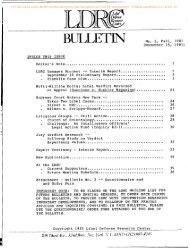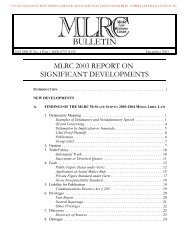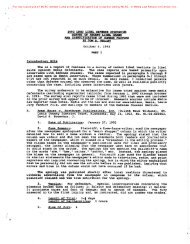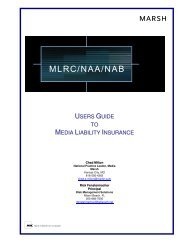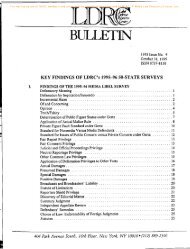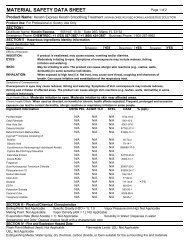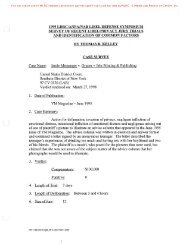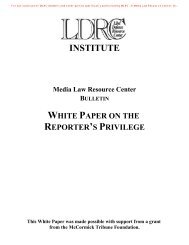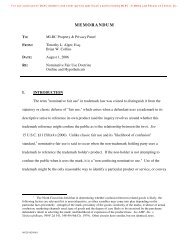2006 MLRC/NAA/NAB LIBEL DEFENSE ... - Directrouter.com
2006 MLRC/NAA/NAB LIBEL DEFENSE ... - Directrouter.com
2006 MLRC/NAA/NAB LIBEL DEFENSE ... - Directrouter.com
You also want an ePaper? Increase the reach of your titles
YUMPU automatically turns print PDFs into web optimized ePapers that Google loves.
For exclusive use of <strong>MLRC</strong> members and other parties specifically authorized by <strong>MLRC</strong>. © Media Law Resource Center, Inc.transcripts” be inserted but the phrase had been used in the preceding paragraph. They thenagreed that the sentence would be changed to “Gorajczyk told the DuPage grand jury.”After a three-week trial where plaintiff represented himself pro se, state district courtjudge, Robert Gordon, granted a motion for directed verdict as to defendant Ken Armstrongand the jury returned a verdict in favor of The Chicago Tribune and Maurice Possley, theprincipal author.4. Verdict:Verdict for the defense on the general liability question. Three special interrogatorieswere also answered: there was no actual malice and there was no defamation but thestatement was false in a material way.5. Length of Trial:Three weeks.6. Length of Deliberation:Approximately 4½ hours.7. Size of Jury:Twelve jurors and two alternates. Court required a unanimous verdict.8. Significant Pre-Trial Rulings:Motions to dismiss and for summary judgment were denied. A second motion forsummary judgment was filed on behalf of Ken Armstrong after the close of discovery andshortly before trial and was also denied. Interestingly, Judge Flanagan’s order denyingArmstrong’s second motion for summary judgment stated in part, “[Armstrong] points outthat it is undisputed that he had nothing to do with the portion of the article containing thedefamatory language and there is no evidence that he knew about the falsity of the statementat issue. Further, while the plaintiff does not dispute the lack of evidence againstArmstrong . . . the evidence in the record is sufficient to raise questions of fact vis-à-vis theissue of actual malice on the part of Armstrong, the extent of his knowledge of falsity of thestatement at issue, and the extent of his participation in the creation of the <strong>com</strong>plete article.”Motions in Limine: Plaintiff opposed defendants’ collection of other media stories(books, television programs such as A&E and “60 Minutes,” other newspaper coverage)about plaintiff’s prosecution of the Nicarico murder, which became known as the “haystack.”The court initially granted plaintiff’s motion in limine, but informed the plaintiff that if heopened the door to his reputation, the court would reconsider the ruling.36



